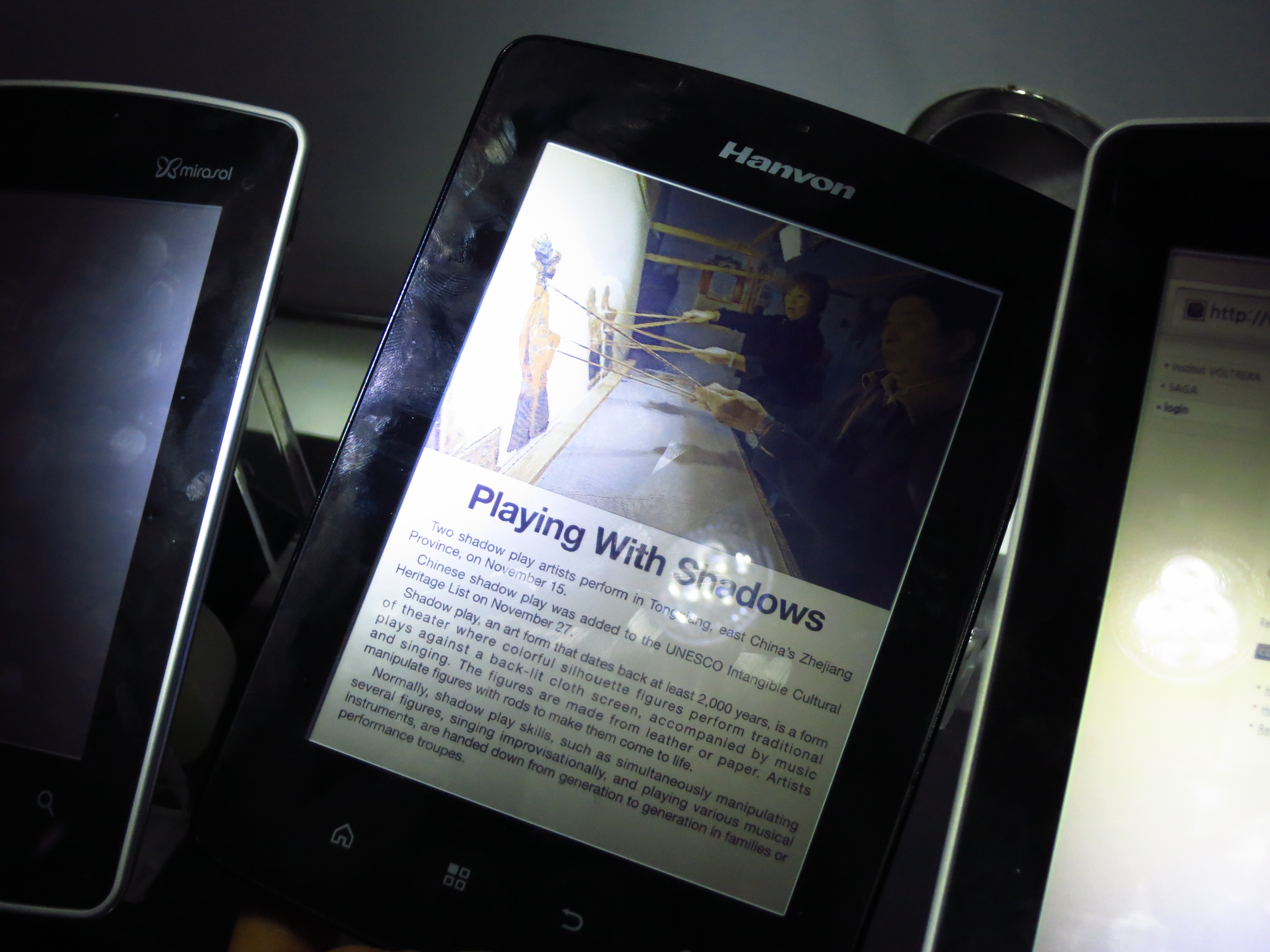Compared to processors, display technology evolves at a snail's pace, which was evident when we hit the show floor this year at MWC. Despite the virtues extolled by Qualcomm, Intel, Nvidia, TI, and Huawei with their respective SoC designs, every single smartphone that we saw either used an IPS LCD or AMOLED display. That common heredity can't be ignored.
Yet, there was one surprise. At Qualcomm's booth, we saw a few products with interferometric modulator displays (IMOD), which is better known under its trademark name mirasol. For those not in the know, mirasol is the first industrial scale application of a MEMS-based display. The cool part of this technology is that viewing quality doesn't change under different lighting conditions. In fact, the more light there is the better the display looks, because the components in the display panel reflects light similar to the way a butterfly's wings shimmer in the sunlight.
At the microscopic level, there are reflective subpixels that reflect only one wavelength of light (one for red, green, or blue). Multiple elements of each color are used to give combinations of colors by using different ratios of reflected colors and to balance overall brightness of each pixel. From a power perspective, each reflective subpixel has two states. The first requires no power and allows for the display to reflect/display an image. Meanwhile, the application of a voltage can be used to adjust the alignment of the reflective elements to create and image or clear the display.
In theory, this could be a more power efficient solution than e-ink that doesn't have to sacrifice the attraction of color technology. Plus, this technology doesn't suffer the same lag issue that e-ink does, so it's perfectly capable of video. If it's so great, why don't we see more devices using displays?
The problem is cost. The first device to use a mirasol display is called the Kyobo e-reader, which is restricted to the Korean market. It sports 5.7-inch XGA display (1,024x768-pixel resolution, 223 ppi), runs on a Qualcomm 1GHz Snapdragon S2-class processor, and employs a touch screen interface. The cost is roughly $310. There are ambitions to bring this to smartphones, but Qualcomm still has a long road ahead before mirasol is ready to go head to head with AMOLED or IPS LCD displays.
Get Tom's Hardware's best news and in-depth reviews, straight to your inbox.
-
outlw6669 This tech looks quite promising!Reply
How does it work under low-light conditions though?
Is there some sort of front light to keep it visible? -
burnley14 outlw6669This tech looks quite promising!How does it work under low-light conditions though?Is there some sort of front light to keep it visible?Did you even read the article? It has reflective subpixels that not only allow you to view it in daylight, but it looks even better in bright light (according to this article anyway).Reply -
outlw6669 Yes, reflective.Reply
As in it needs an external light source (like e-ink) or a front light to see in low light situations. -
delazaren burnley14Did you even read the article? It has reflective subpixels that not only allow you to view it in daylight, but it looks even better in bright light (according to this article anyway).Can you answer outlw6669 question?Reply -
TeraMedia While reading the description of how the technology works, I couldn't help but start to think about an etch-a-sketch, and wonder whether shaking one of these upside-down would similarly clear its display...Reply -
randomstar Did you read the question? the reference is for LOW light, and I have the same question.. Like the Kindle, is it requiring an external light to read at night / low light?Reply
burnley14Did you even read the article? It has reflective subpixels that not only allow you to view it in daylight, but it looks even better in bright light (according to this article anyway). -
JamesSneed Reply9350023 said:Did you even read the article? It has reflective subpixels that not only allow you to view it in daylight, but it looks even better in bright light (according to this article anyway).
No reason to be a douche burnley14. In which one of those examples you mentioned are low light conditions? Neither! What you quoted was why the first poster asked, reflective subpixels in low light conditions are going to be reflecting what again?
Anyhow the Mirasol displays do have an issue in low light conditions if they do not integrate some form of illumination. -
willard burnley14Did you even read the article? It has reflective subpixels that not only allow you to view it in daylight, but it looks even better in bright light (according to this article anyway).He was asking about low-light, not bright light.Reply -
Hmmm, there's some weird screen displacement due to lack of vsync in the first video. Hope they get rid of that asap :DReply
-
GreaseMonkey_62 Reply
That's my first question as well.9350021 said:This tech looks quite promising!
How does it work under low-light conditions though?
Is there some sort of front light to keep it visible?


